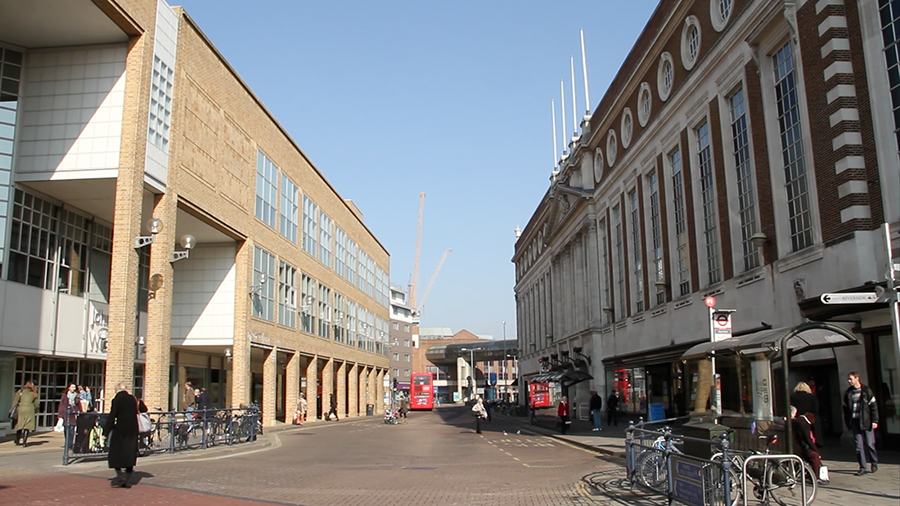[This post was originally posted on Half-Man Half-Bird's website and has been reposted here with permission so that my future posts on this topic are not out of context.
Unlike the other posts this was written by Matthew Griffin and not by me.]
I'm delighted to be on your screen telling you what our new project is all about. Put simply, we're going to put a rollercoaster in a town centre. London was lucky enough to be graced with its one whole day of Spring on Tuesday, so we took our opportunity to go filming in the small town of Kingston in South West London to get our source footage.
We shot with my EOS 7D and 18-135 EF-S, and we went hand-held. The traffic and pedestrians also proved a problem, as the street we to used is primarily a load of bus stops, and last time we checked, we couldn't get a rollercoaster through a double decker bus. Also for technical reasons, the fewer buses, cars and people, the less reflections and shadows have to be faked later on.
Below is a frame from our footage - imagine the rollercoaster coming down from the distance and around towards the camera, before flying off to the left, where the camera pans to follow it.
We shot two other shots as well, one slightly further up the street and one by the riverside all in 1080p, but we may just use 720p and use the extra pixel space for a bit of re-framing, but it's useful to have the higher res if we need it.
We also need to make sure that any 3D we put in the footage, which is a lot (all of the windows need to be replicated in order to reflect the roller coaster, the buildings need to cast shadows etc.), can be lit realistically. For that we needed some environment photos. There isn't really an easy way to do this, and we didn't fancy standing in the middle of the street and taking an HDR image of a chrome ball (which we don't actually have). iPhone and Photosynth by Microsoft to the rescue! Photosynth is almost the perfect app for this, as it creates a 'photo sphere' which can then be exported as an equirectangular image (below). We don't get the same light range as an HDR image, but it should be good enough for what we want.
We didn't use a full spherical panorama, we just took all we needed to without looking too suspicious, as the sky and the paving can be fixed later. The images have some slight oddities where the joins are, but only have to correct the major ones, (including the severed limbs that appear at some of the joins). The rest won't be noticeable, as this is only to cast reflections and accurate lighting on the model. See our photosphere below, for the shot in the image above.
We're doing this project shot by shot, as we may not actually be able to pull it off how we imagine, and we're not going to release something that is sub-standard. We can always add more shots in later if these turn out alright. First, we have to test if we can actually track the shots, before we do anything else, as if we can't - we're pretty stuffed!
So that's what we're up to, and how far we've got so far. We don't have a clue how long it will take for us to finish this, but we will post a weekly update on this page, and also minor updates/information on the Twitter-sphere.
Matt.

